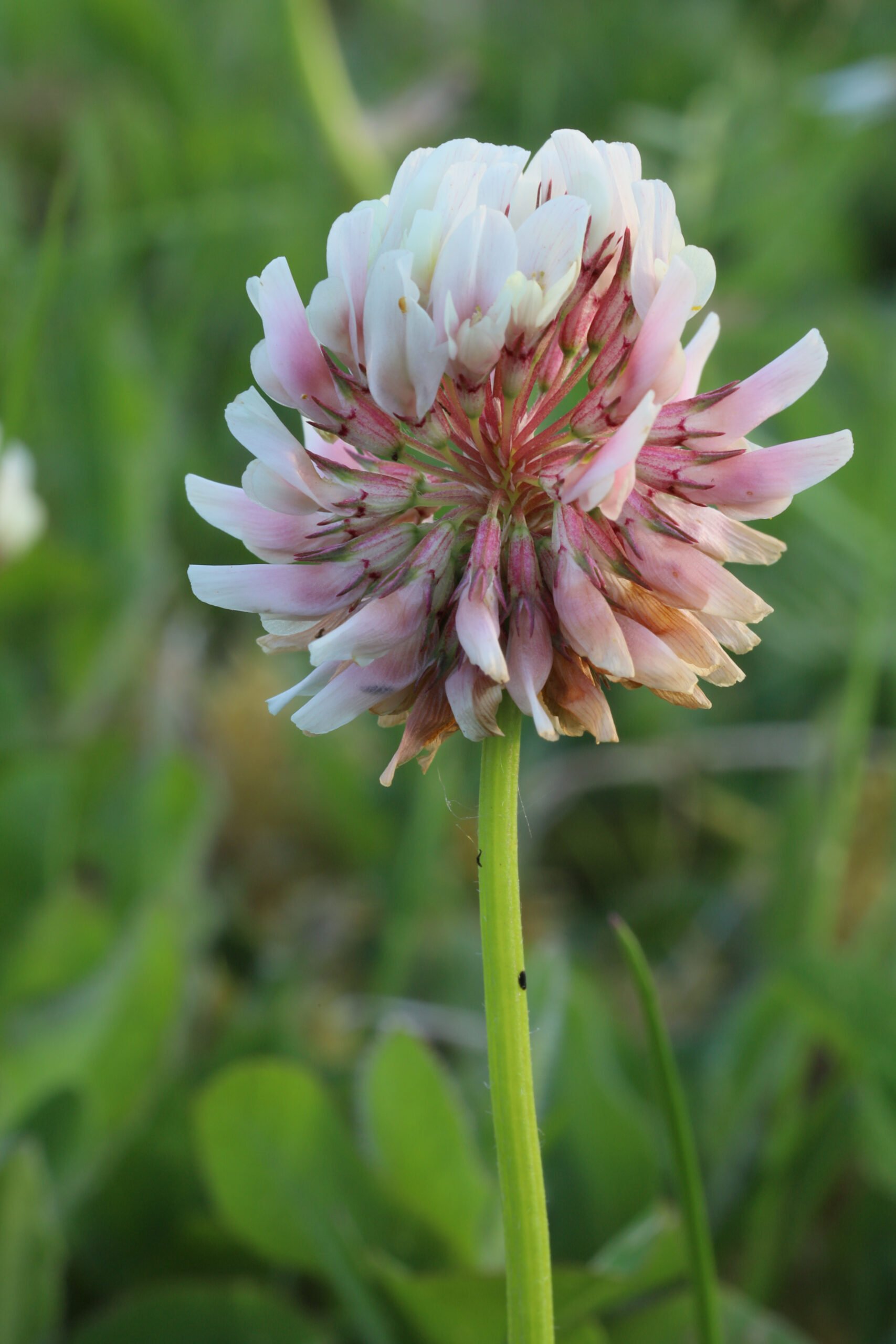Description
White clover is a long-lived creeping perennial which spreads through the base of grassland with prostrate creeping stems which root at intervals. White clover as a species is variable in form and stature. Wild native forms of white clover are usually short and compact with many small trifoliate leaves and in grazed or mown turf form mats. The small leaved varieties we offer are most similar to these wild forms. Other imported agricultural varieties have larger leaves and can grow taller, especially when growing amongst longer grass.
Habitat Information
White clover grows in a wide range of grassland: pastures, lawns, paths, verges and meadows; and as scattered plants in more open habitats like arable fields and waste ground. It is intolerant of shade so does not occur in woodland or thrive in taller grassland and other vegetation. It grows best on moist soils which are well supplied with nutrients other than Nitrogen (which it can fix for itself).
White clover is the most important forage legume for agricultural grassland because of its ability to fix Nitrogen from the atmosphere, and because it is long lasting and provides high quality fodder for livestock. Varieties of white clover have been widely sown on farmland since the 17th century.
White clover will often regenerate naturally on land which has a past history of grassland as it will usually contain a persistent white clover soil seed bank.
Growing Information
White clover can be sown at any time of the year when soil and weather conditions are suitable. Cultivated clovers as young seedlings are susceptible to slug and frost damage so are best sown in good growing conditions in spring or summer before the end of August.
White clover germinates well from seed but is generally slower to develop than other legumes and may not establish full ground cover until its second year. Once established it is highly persistent wherever conditions are suitable for its growth.
Small leaved white clover is very tolerant of heavy grazing, frequent mowing or trampling. It thrives and forms a dense mat amongst well managed pasture and lawns. It can also withstand drought and often stays green in a lawn when the grasses brown-off.
Small leaved white clover is a useful addition to informal lawns and amenity grassland helping to produce a sward that is more tolerant of wear and which stays green without the need for feeding and watering. Relaxed mowing during the summer will allow the production of a succession of flower heads for bees and other insects.
Clover in a sward can potentially deliver as much nitrogen for free as a 200kg/ha/year fertiliser application. The forage produced by a sward with a good clover content is higher in protein and more palatable than grass only, livestock are more healthy and productive as a result. Because it is a such a rich food source livestock must be introduced to it in a managed way to avoid dietary problems such as Bloat and Laminitis.
White clover can be quite competitive and is sometimes sown as weed suppressing ground cover.
Whilst white clover flowers are very good for pollinating insects its competitive nature, persistence, productivity and generation of fertility all make it unsuited for inclusion in wild flower mixtures.
Small leaved white clover does not grow very tall and is not tolerant of shading from surrounding vegetation. It is inhibited by growth of taller grasses and herbs so is less dominant in meadows than in frequently grazed or mown pastures and short turf. It is slow to start growth in spring so is particularly sensitive to shading from earlier growing grasses that are not removed by spring grazing.
Meadow management (leaving the sward uncut from spring through to early summer) will help suppress clovers that naturally invade sown wild flower meadows.
A grass sward which contains clover is usually a joy to mow with a scythe. Its soft short foliage yields easily and cuts smoothly.
Sowing Rate
Sow at 0.1 – 1g/m2 or 2 -5% in a mix

